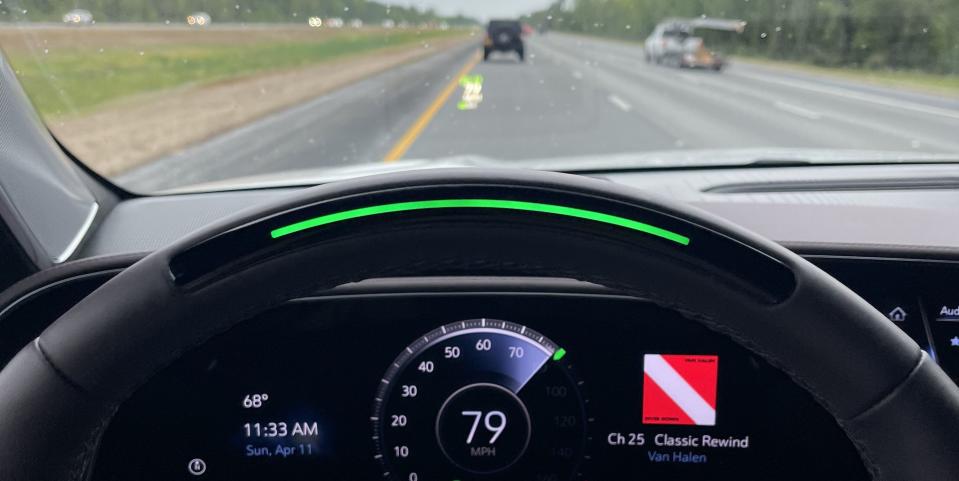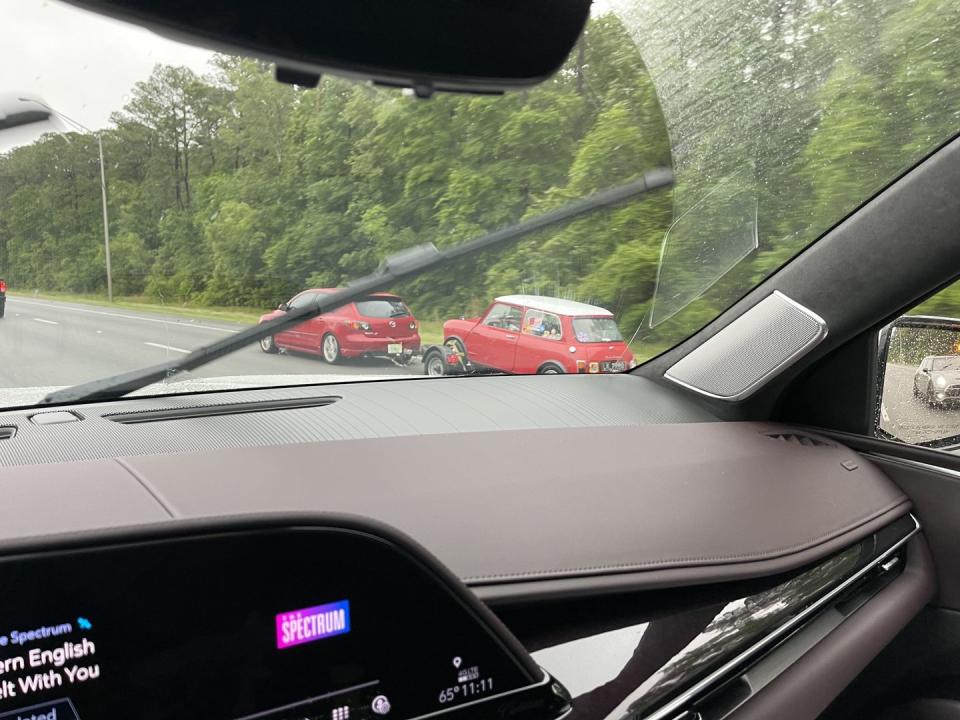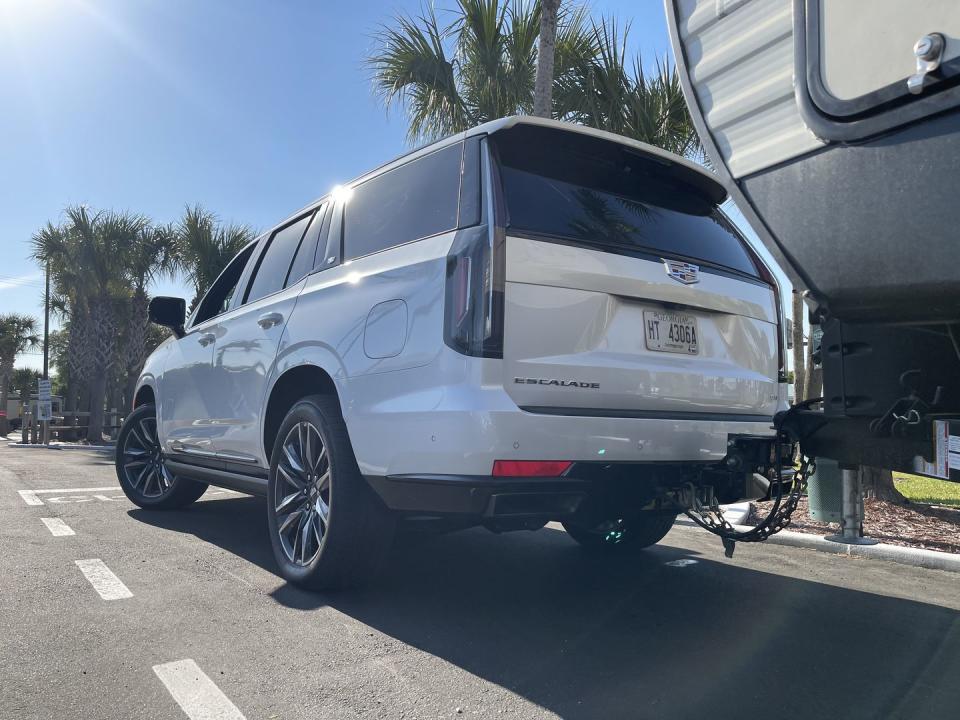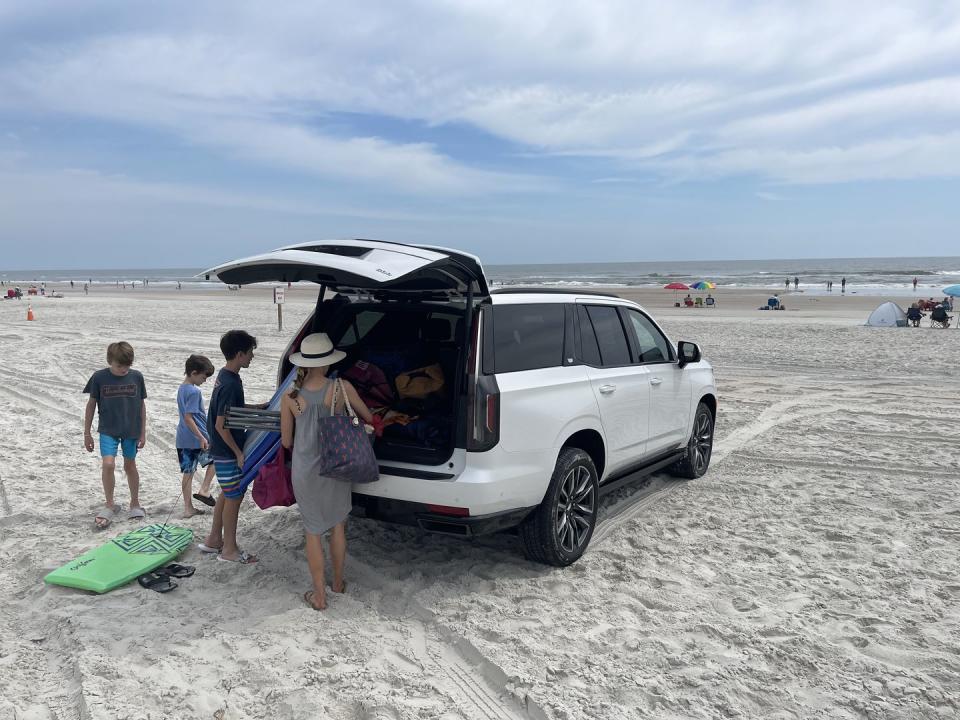Super Cruise's Biggest Problem Is Us

Traffic flows smoothly until it doesn’t. Sometimes you get a bit of advance warning, a glimpse of flashing blue lights up ahead, or Waze calling out a chunk of truck tire in the road. But most of the time, you’ve just got to react. Like when I’m on I-95, heading back from a trip to Florida in the 2021 Cadillac Escalade, and traffic abruptly—and I mean, panic-stop abruptly, and for no discernable reason—slows from 70 mph to roughly 15 mph.
The twist to this particular situation is that the Escalade itself is driving, inasmuch as its Super Cruise driver assistance system engaged, and thus I’m touching neither pedals nor steering wheel. And in fact, the Escalade initiates its own braking when the car ahead slows down. But I can see the two cars ahead of that going nose-down under hard braking, so I intervene and mash the brakes preemptively while doing two other things: eyeing the emergency lane to my left, in case I run out of room, and checking the rearview mirror to see if anyone behind me is running out of room—in which case, I’d also ditch to the emergency lane. And I nearly do, right about the time I see the 18-wheeler three cars back start to jackknife, brakes locked and smoke pouring off its tires. What’s your move, here, Super Cruise?
This situation is what’s known as an edge case, which is an event considered way out of the ordinary—a problem that tests the limits of a system. And Super Cruise makes you realize that driving inherently offers up an array of edge cases. Staying in your lane on a divided highway and keeping pace with traffic is the easiest task possible, low-hanging fruit for automation, and it’s still insanely difficult. There’s bleached-out pavement with faded lines combined with shadows across the road, construction zones with lane-shift chicanes, new sections of road that don't match the map. And, the biggest variable of all: other drivers.

My trip south, from North Carolina to St. Augustine, Florida, included 380 miles of potential Super Cruise driving (on I-95 and, around Jacksonville, on I-295). Of that, Super Cruise was engaged for 346.2 miles—but not all at once. It canceled, or I intervened, 25 times. Its longest stint on the way to Florida was 86.5 miles, followed by another stretch that lasted 84.4 miles. But at one point, there were four cancelations within 10.2 miles. Sometimes Super Cruise would cancel and then turn right back on, other times it would refuse to engage for a few miles. A few times, I helped it, like in a construction zone when I nudged the steering the wheel through an aggressive lane shift, a real driving-as-Ouija-board experience. I wanted Super Cruise to succeed, but its problems now are the same ones it had three years ago, when I first drove a Super Cruise CT6.

That car hated the highway in South Carolina, near Pedro’s South of the Border, where the pavement is desiccated, the lane markings faded, and trees in the median cast confusing shadows over the road. The Escalade didn’t fare any better (in fact, Super Cruise seems less happy in the Escalade than the CT6, thanks to its increased susceptibility to cross-winds). It made it 8.8 miles before abruptly yanking the wheel left, toward the median, and canceling. It canceled a couple more times within the next 20 miles before the pavement improved and it broke off a 22-mile streak. That one ended when a truck with a flatbed trailer changed lanes, squeezing in front with inches to spare and confounding the Escalade’s minimum-following-distance algorithm.
The problem, oft repeated, is that if you set Super Cruise’s following distance to anything other than its closest setting, that leaves enough space for fellow motorists to constantly cut in front of you, causing Super Cruise to have a freakout. But if you’re on the closest setting, Super Cruise is glued to the car ahead and all of its reactions are magnified. A human driver (a competent one, anyway) tracks the car ahead while looking down the road, too, scanning for clusters of brake lights or debris. Super Cruise can’t do that. It’s looking at the car in front of you, not the one a quarter-mile ahead that’s doing 25 mph in the left lane of I-95.
And yes, that’s a real example, and one that broke a 110-mile Super Cruise streak on the way home, the trip's longest uninterrupted run. I saw the Ford Escape puttering along with its hazard lights on and hit the brakes preemptively, in case the car in front of me ran up on it at a 50-mph speed differential. This is another unavoidable fact of automation, as it stands now—to some extent, your system is only as good as the driver ahead of you. That stranger in the Silverado is your braking avatar, and if they're smooth, you will be too. Same deal if they're not.

Champions of autonomy, people who think we’re 10 years away from Level 5 driverless cars, should take a ride in a Super Cruise Caddy. Somehow, the true difficulty of driving is brought into sharper relief when you’re two-handing a burrito and supervising the car like a nervous driver-ed instructor. “OK, getting a little close to the truck on the right there, S.C.! Let’s crowd left a little bit when we reach that car in the breakdown lane. That Bonneville is definitely going to cut in front of you to get around the RV, so be ready for that.” Driving isn’t just about perceiving the physical world. There’s a lot of context, a lot of experience and judgement at work. Otherwise, teen drivers and their sharp reaction times would have the lowest insurance rates. I’m pretty sure that’s not the case.
It’s amazing that you can buy a car that will physically control itself for 100 miles or more on the highway. But you also never know when it’ll do that or when it’ll go 100 yards before a vape enthusiast in a Hyundai Tiburon decides to swerve in front of you with three inches of margin. Call me a Luddite, but I think that driving—as a pleasure, a necessity, an industry—is safe. Cars might get smarter, but people never will.
You Might Also Like

 Yahoo Autos
Yahoo Autos 